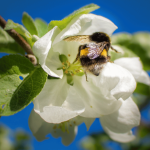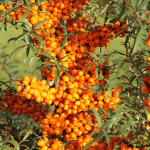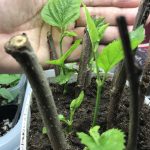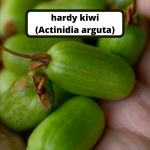Exploring the Siberian Peashrub: A Sustainable Alternative for Norwegian Gardens
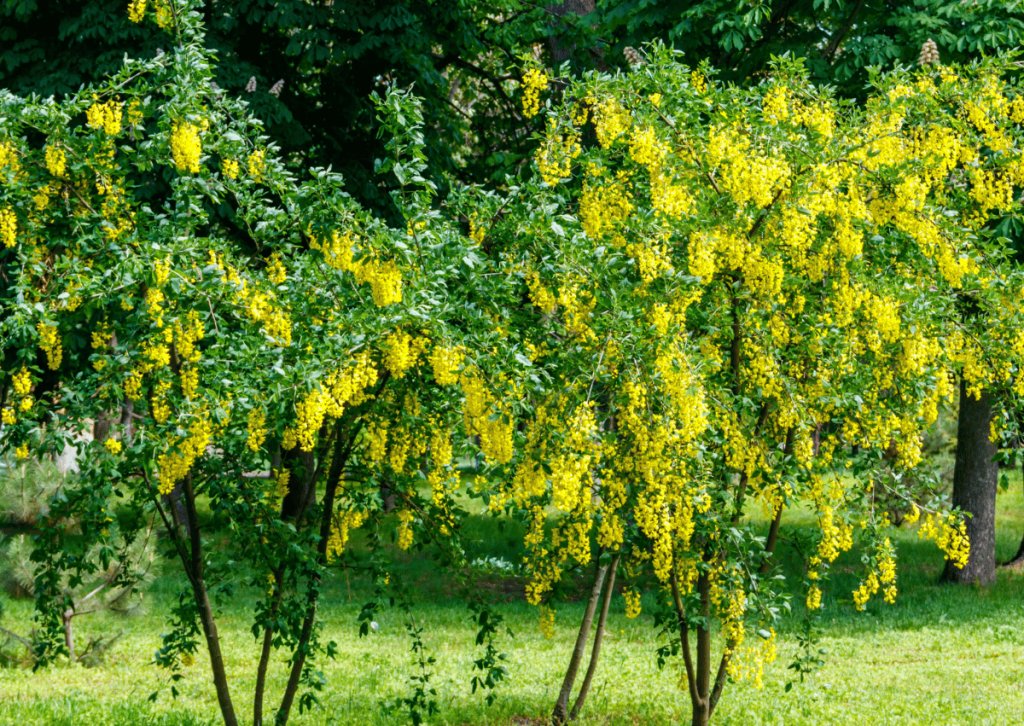
In Norway, there are strict regulations in place to protect the environment and local ecosystems from the potentially harmful effects of invasive and non-native plant species. Compared to a lot of other countries this list isn’t very long. Among those species that are restrictive we can find the Laburnum trees, including the common laburnum (Laburnum anagyroides) and alpine laburnum (Laburnum alpinum). These attractive trees, often called golden chain or golden rain due to their cascading yellow flowers, are prohibited from being planted in the country because they can have negative impacts on the environment and pose a threat to native plant species.
Exploring Sustainable Alternatives: Black Locust, Honey Locust, and Siberian Peashrub
With the growing interest in eco-friendly gardening practices and the need to find sustainable alternatives to restricted plants, many gardeners and farmers in Norway are looking for viable tree species that can thrive in the local climate while providing environmental benefits. Three such alternatives that have gained attention in recent years are the Black locust (Robinia pseudoacacia), the Honey locust (Gleditsia triacanthos), and Siberian Peashrub (Caragana arborescens).
Black locust is a fast-growing tree native to North America, known for its fragrant, white flowers and durable wood. It is also a nitrogen-fixing species, which means it can improve soil fertility by converting atmospheric nitrogen into a form that plants can use.
Honey locust, another North American native, is a medium-sized tree with attractive, fern-like foliage and large seed pods. It is valued for its adaptability to a wide range of soil types and its tolerance to drought.
A Closer Look at the Siberian Peashrub (Caragana arborescens) as a Green Alternative
Among these alternative tree species, the Siberian Peashrub (Caragana arborescens) stands out for its numerous advantages and suitability to the Norwegian climate. The Siberian Peashrub is a deciduous shrub or small tree native to Siberia and parts of China and Mongolia. It is a hardy plant that can thrive in a wide range of soil types and environmental conditions, making it an ideal choice for gardeners and farmers in Norway, particularly those in USDA Zone 7 or similar climates.
One of the main advantages of the Siberian Peashrub is its strong root system, which can help combat erosion and stabilize the soil in areas prone to landslides or soil degradation. This can be particularly beneficial in the wet and sometimes challenging Norwegian climate. Additionally, the Siberian Peashrub is an edible plant, with its young leaves, flowers, and seeds being safe for human consumption. This is in stark contrast to the restricted Laburnum species, which are toxic and pose a risk to humans and animals if ingested (link to the ruling in Norway about alpine laburnum (Laburnum alpinum) in particular).
Another key benefit of the Siberian Peashrub is its nitrogen-fixation properties. As a member of the Fabaceae family, it has the ability to form a symbiotic relationship with nitrogen-fixing bacteria in the soil. This allows the plant to convert atmospheric nitrogen into a form that can be used by other plants, thereby improving soil fertility and promoting healthier ecosystems.
The Siberian Peashrub also boasts attractive features, such as its bright yellow flowers that bloom in late spring, and its pealike foliage which adds a unique visual appeal to any garden or landscape. The plant’s ability to withstand harsh weather conditions and its relatively low maintenance requirements make it an excellent choice for gardeners and farmers looking to incorporate sustainable and eco-friendly plants into their outdoor spaces.
In conclusion, the Siberian Peashrub presents a viable and environmentally friendly alternative to the restricted Laburnum species in Norway.
General Information about the Siberian Peashrub
Origin and Distribution
The Siberian Peashrub (Caragana arborescens) is a hardy deciduous shrub or small tree native to Siberia and other parts of Central Asia. Due to its resilience and adaptability, it has been introduced to other parts of the world, including North America and Europe. It is often used in landscaping and as a windbreak, thanks to its ability to thrive in challenging environments and provide shelter to other plants and animals.
Physical Characteristics and Growth Habits of the Peashrub
The Siberian Peashrub is a visually striking plant, known for its distinctive light green leaves and bright yellow flowers that bloom in May and June. It typically grows to a height of 10 to 15 feet, with a similar spread. Its branches are dense and provide excellent shelter for birds and other wildlife. In late summer, the yellow blooms give way to slender brown seedpods, which can be harvested for their edible seeds.
This plant is known for its robust growth habits and ability to withstand harsh conditions. It is drought-tolerant and can grow in various soil types, including sandy, loamy, and clay soils. The Siberian Peashrub is also capable of tolerating saline and alkaline conditions, making it an excellent choice for areas with challenging soil conditions.
USDA Zone Compatibility and Climate Adaptability for the Siberian Peashrub
The Siberian Peashrub is highly adaptable to various climates and is suitable for USDA Zones 2 through 7. This broad range of compatibility means that it can grow well in cold, temperate, and moderately warm climates. Its ability to withstand harsh winters and hot summers, coupled with its tolerance for different soil types, makes it an ideal choice for gardeners and landscapers looking for a low-maintenance, eco-friendly alternative to more traditional and potentially invasive plant species. This means it should thrive well in most parts of Norway, but may not be the best for the areas near the coast on the south-western side as they’re in USDA Zone 8.
In addition to its climate adaptability, the Siberian Peashrub provides several ecological benefits. Its deep root system helps to prevent soil erosion, making it an excellent choice for planting on slopes or in areas prone to erosion. The plant is also a nitrogen-fixing species, meaning it can capture atmospheric nitrogen and convert it into a form that is usable by other plants, thus enriching the soil and improving its fertility.
Furthermore, the seeds produced by the Siberian Peashrub are edible, which offers an additional source of sustenance for both humans and wildlife. This is in stark contrast to the restricted Laburnum species, which are known for their toxicity.
In conclusion, the Siberian Peashrub is a versatile and sustainable alternative to other tree species, thanks to its adaptability, resilience, and ecological benefits. Its ability to thrive in a variety of climates and soil conditions, combined with its attractive appearance and edible seeds, make it an excellent choice for those looking to create a more sustainable and environmentally conscious garden or landscape.
Benefits of the Siberian Peashrub for Norwegian Gardens
Environmental Benefits of the Siberian Peashrub
Nitrogen Fixation Capabilities
One of the primary environmental benefits of the Siberian Peashrub is its ability to fix atmospheric nitrogen. As a nitrogen-fixing plant, the Siberian Peashrub hosts bacteria in its root nodules that capture and convert nitrogen from the atmosphere into a form that is usable by plants. This process enriches the soil and improves its fertility, which in turn benefits other plants growing nearby[1]. Nitrogen fixation is an essential ecological function that contributes to the overall health and productivity of a garden, reducing the need for synthetic fertilizers and promoting sustainable gardening practices.
Soil Improvement and Erosion Control
Another key environmental benefit of the Siberian Peashrub is its deep root system, which helps prevent soil erosion. This is particularly valuable in areas prone to erosion, such as slopes or areas with unstable soil. By holding the soil in place, the Siberian Peashrub helps maintain soil structure and prevents the loss of valuable topsoil. Additionally, its ability to grow in various soil types, including sandy, loamy, and clay soils, as well as its tolerance for saline and alkaline conditions, makes it an ideal choice for areas with challenging soil conditions[2].
Wildlife and Pollinator Support of the Siberian Peashrub
The Siberian Peashrub provides essential habitat and food resources for various wildlife species, including birds, insects, and small mammals. Its dense branching structure creates a safe nesting area for birds and offers shelter from predators and harsh weather conditions. Furthermore, the bright yellow flowers that bloom in May and June attract pollinators such as bees, butterflies, and other beneficial insects, promoting overall biodiversity and contributing to a healthy ecosystem.
Resilience to Wet USDA Zone 7 Climate
Gardens, especially those in wetter regions of USDA Zone 7, can benefit significantly from the resilience of the Siberian Peashrub. This plant is highly adaptable to various climates, from cold and temperate to moderately warm conditions. Its ability to withstand both harsh winters and wet summers makes it an ideal choice for gardeners and landscapers in Norway looking for a low-maintenance, eco-friendly alternative to more traditional and potentially invasive plant species[3]. Additionally, its drought tolerance makes it suitable for areas prone to periodic dry spells, ensuring its survival even in challenging weather conditions.
Potential Uses of the Siberian Peashrub in Permaculture and Sustainable Agriculture
The Siberian Peashrub’s many benefits make it an excellent candidate for permaculture and sustainable agriculture practices. In permaculture, the focus is on creating self-sustaining systems that mimic natural ecosystems, emphasizing the use of plants that provide multiple functions and benefits. The Siberian Peashrub’s nitrogen-fixing capabilities, soil improvement and erosion control properties, and support for wildlife and pollinators all contribute to its value in permaculture systems.
In sustainable agriculture, the goal is to minimize the use of synthetic inputs and maximize the ecological health of the land. The Siberian Peashrub can play a vital role in such systems, as its nitrogen-fixing and soil-improving properties can reduce the need for chemical fertilizers, and its support for pollinators can help ensure healthy crop production.
Furthermore, the edible seeds produced by the Siberian Peashrub can serve as a valuable food source for both humans and animals. Its seeds are high in protein and can be consumed either raw or cooked, adding another layer of functionality to this versatile plant. In sustainable agriculture systems, the Siberian Peashrub could be integrated as part of a mixed planting scheme, providing food for livestock or humans while also contributing to the overall health and productivity of the land.
Aesthetic Appeal of the Siberian Peashrub
In addition to its ecological benefits, the Siberian Peashrub is also a visually attractive plant. Its light green leaves and bright yellow flowers make it stand out among other tree and plant species, adding visual interest and beauty to gardens and landscapes[1]. The Siberian Peashrub can be used as a focal point, a border plant, or even as part of a mixed planting scheme, enhancing the overall aesthetic appeal of outdoor spaces.
In conclusion, the Siberian Peashrub offers a multitude of benefits for Norwegian gardens, making it a highly valuable alternative to more traditional and potentially invasive plant species. Its nitrogen fixation capabilities, soil improvement and erosion control properties, support for wildlife and pollinators, resilience to wet USDA Zone 7 climate, and potential uses in permaculture and sustainable agriculture all contribute to its suitability for Norwegian gardens. Furthermore, its aesthetic appeal ensures that it not only provides ecological benefits but also enhances the beauty of gardens and landscapes. By integrating the Siberian Peashrub into Norwegian gardens, gardeners and landscapers can support local ecosystems, promote sustainable gardening practices, and create visually appealing outdoor spaces.
Planting and Caring for the Siberian Peashrub
Site Selection and Preparation
Choosing the right site and preparing it adequately is essential for the successful growth and development of your Siberian Peashrub. While the plant is adaptable to a wide range of soil types and conditions, it prefers well-drained soil and full sun to partial shade[2]. To ensure optimal growth, select a site with these conditions in mind. Additionally, make sure there is enough space for the plant to grow, as mature Siberian Peashrubs can reach heights of up to 15-20 feet and spread about 10-15 feet wide.
Before planting, clear the area of any weeds or debris and loosen the soil. If necessary, amend the soil with compost or other organic matter to improve its fertility and drainage. This will provide a healthy environment for the Siberian Peashrub to establish its root system and thrive.
Siberian Peashrub Planting Guidelines and Best Practices
To plant your Siberian Peashrub, follow these guidelines and best practices:
- Dig a hole twice as wide and as deep as the root ball of the plant. This will allow the roots to spread easily and establish themselves in the soil.
- Gently remove the plant from its container, being careful not to damage the roots. If the plant is root-bound, gently tease apart the roots to encourage them to spread out in the soil.
- Place the plant in the hole, ensuring that the top of the root ball is level with the surrounding soil. This will help prevent the plant from being planted too deep, which can cause the stem to rot.
- Fill the hole with soil, gently pressing down to eliminate air pockets and ensure good contact between the roots and the soil.
- Water the plant thoroughly to help settle the soil around the roots and provide essential moisture for establishment. Continue to water regularly during the first growing season, especially during dry periods.
- Apply a layer of mulch around the base of the plant, keeping it away from the stem, to help retain moisture, suppress weeds, and regulate soil temperature.
Pruning and Maintenance of the Siberian Peashrub
The Siberian Peashrub requires minimal maintenance, but some pruning can help maintain its shape and promote healthy growth. Pruning is best done in late winter or early spring before new growth begins.
- Remove any dead, damaged, or diseased branches to maintain the overall health of the plant.
- Thin out crowded or crossing branches to promote good air circulation and prevent pest and disease problems.
- Prune for shape and size by cutting back overgrown branches or removing any unwanted growth. This will help maintain the desired form and prevent the plant from becoming too large for its space.
- In addition to pruning, continue to monitor the plant’s water needs, particularly during dry periods. Fertilize the Siberian Peashrub with a balanced, slow-release fertilizer in early spring to promote healthy growth and flowering.
By following these planting and care guidelines, you can ensure the successful establishment and growth of your Siberian Peashrub, providing environmental benefits and aesthetic appeal to your garden for years to come.
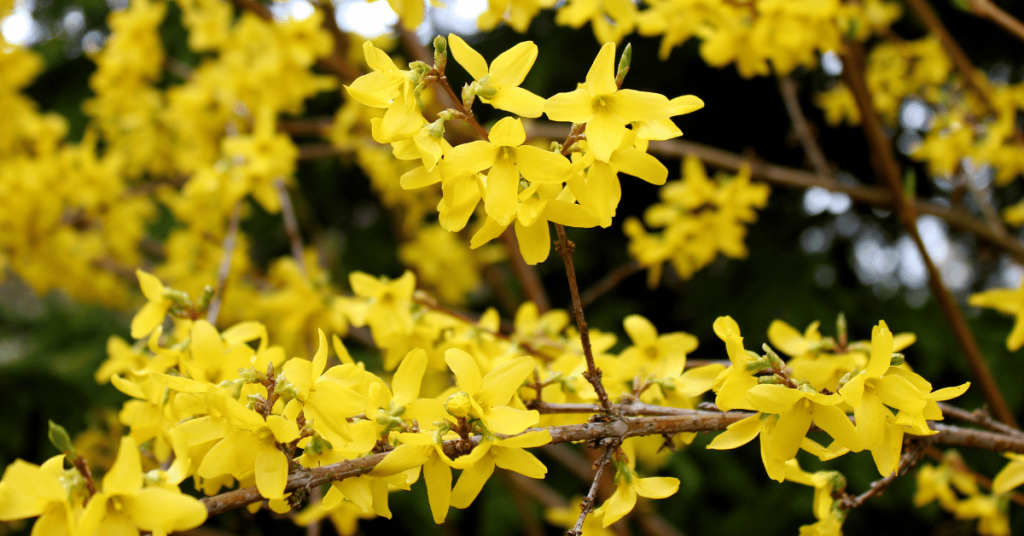
Possible Challenges and Solutions
Potential Pests and Diseases
Siberian Peashrubs, like any other plant, can face certain challenges from pests and diseases. Some common pests that may affect this plant include aphids, spider mites, and caterpillars. Diseases such as leaf spots, cankers, and powdery mildew can also pose problems.
To manage pests and diseases effectively, consider the following solutions:
- Regularly inspect your Siberian Peashrub for signs of pests and diseases. Early detection can help prevent severe infestations or infections and enable prompt treatment.
- Encourage beneficial insects, such as ladybugs and lacewings, to your garden. These natural predators can help control pest populations.
- If pests become a problem, consider using organic or chemical insecticides, carefully following label instructions. Apply these products when pests are present and avoid overuse, as this can harm beneficial insects and the environment.
- Maintain good air circulation around your Siberian Peashrub by properly spacing plants and pruning as needed. This can help prevent fungal diseases like powdery mildew and cankers.
- If diseases become a problem, remove affected plant parts promptly and dispose of them properly. This can help prevent the spread of diseases to healthy parts of the plant or other plants in your garden.
Invasive Tendencies and Control Methods
In some areas, the Siberian Peashrub can exhibit invasive tendencies, spreading beyond its intended planting area and potentially outcompeting native plants. To manage this issue and minimize its impact on your garden and surrounding environment, consider the following control methods:
- Regularly monitor the growth of your Siberian Peashrub and promptly remove any unwanted seedlings or sprouts that appear in the surrounding area.
- Implement physical barriers, such as underground root barriers, to help prevent the spread of the plant’s root system.
- Prune your Siberian Peashrub regularly to control its size and prevent excessive seed production. Collect and dispose of any seed pods to reduce the chances of unwanted spreading.
- If the plant becomes too invasive, consider removing it entirely and replacing it with a less aggressive, native alternative that offers similar benefits for your garden.
By being proactive in addressing these challenges, you can enjoy the many benefits of the Siberian Peashrub in your Norwegian garden while minimizing any potential risks associated with pests, diseases, and invasive tendencies.
Conclusion
In conclusion, the Siberian Peashrub offers numerous benefits for Norwegian gardens, including environmental advantages such as nitrogen fixation capabilities and soil improvement, wildlife and pollinator support, resilience to wet USDA Zone 7 climate, and potential uses in permaculture and sustainable agriculture. However, it’s essential to be mindful of the possible challenges associated with this plant, such as pests, diseases, and invasive tendencies. By carefully selecting the planting site, following best practices for planting and maintenance, and implementing effective control methods, you can successfully incorporate the Siberian Peashrub into your garden while minimizing potential risks.
As you implement the tips and solutions provided in this guide, remember to monitor the growth and health of your Siberian Peashrub regularly. By doing so, you can promptly address any issues and ensure that this versatile and beneficial plant continues to thrive in your Norwegian garden, contributing positively to your landscape and the environment.
Updates: Documenting My Siberian Peashrub Journey
In this final section, I will share updates on the successes and challenges I encounter while growing and caring for my Siberian Peashrubs. By documenting my personal experiences, I aim to provide valuable insights and lessons for others interested in exploring this versatile and eco-friendly plant species in their own gardens.
My personal experience with the arrival and initial treatment of Siberian Peashrub seeds
a. On March 28th, 2023, I received my Siberian Peashrub seeds in the mail. I took a photo to document their appearance upon arrival (left) and then soaked them in hot water (approximately 80°C or 176°F) overnight (right).
b. The hot water treatment is one of several known stratification methods used to promote seed germination. For Siberian Peashrubs, this approach is particularly recommended as it helps soften the seed coat and encourages successful germination.
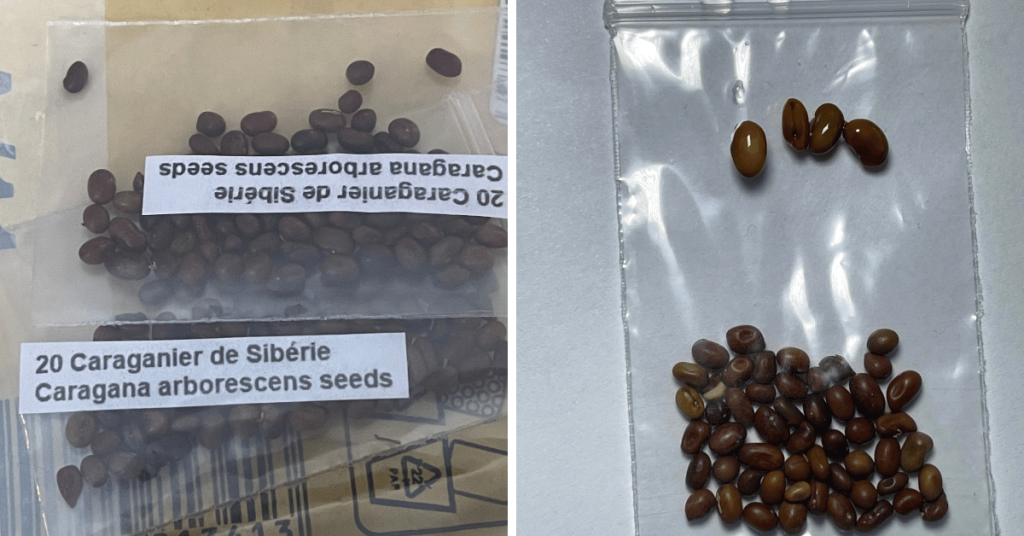
Seed stratification and early germination (3rd of May 2023)
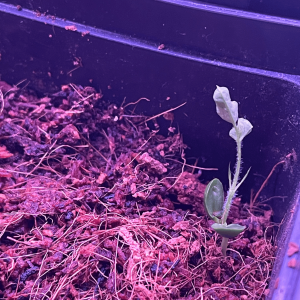
c. After completing the heat treatment, I placed the Siberian Peashrub seeds into a ziplock bag, along with moist coco coir. I then stored the bag in the bottom of my fridge for over a month to simulate a period of cold stratification.
d. When I removed the seeds from the fridge, they had not yet sprouted. However, after about 14 days, two of the seeds began to germinate. The accompanying photo shows one of these germinated seeds, providing a visual representation of its progress.

